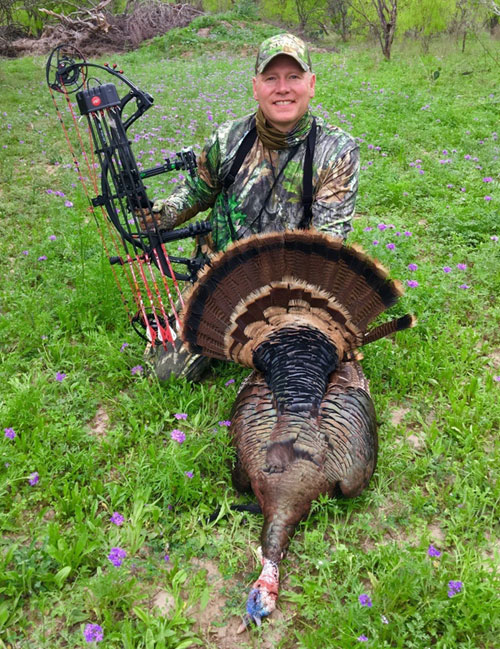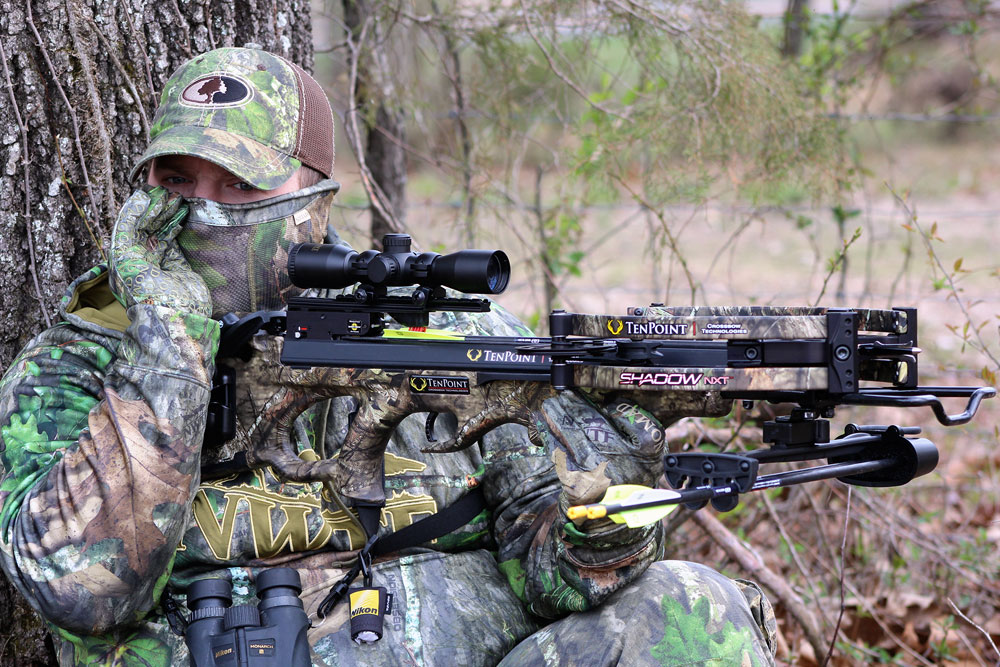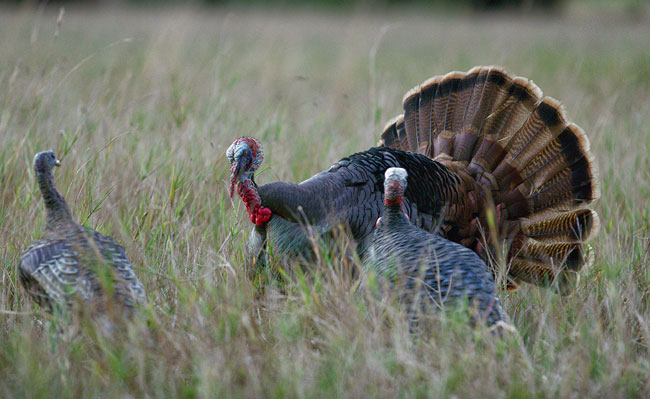Heath Wood
When most people think of bowhunting turkeys, they tend to think of days spent sitting in a ground blind in the middle of a wide open area waiting patiently for birds to respond to calling and decoys. However if hunting in wide open areas is not an option, then the question becomes, how does one bow hunt turkeys in the timber?

Being born and raised in the Ozark hills of southern Missouri, I have done the majority of my turkey hunting in areas where timber is everywhere and crop fields are simply non-existent. In fact, the closest thing to a crop field is the many cow pastures that are found on private land. If hunting on public land, hunters will most likely be hunting the many acres of the Mark Twain National Forest or several acres of government land that borders the rivers that are found nearby.
When turkey hunting in heavy timber areas or around smaller pasture areas, a popular run-and-gun method of hunting is an often used technique. The only challenge with running and gunning in these types of areas is that it makes it challenging when bowhunting turkeys, since most often bowhunting occurs at a standstill.
The biggest challenge is that of not being able to use a ground blind. This is due to the amount of time that it takes to set one up, and when the hunter doesn’t want to be seen, taking that extra time for a blind set-up is too big of a risk. There is also the factor of the position of the blind. A blind needs a level ground without obstruction from brush, or from my own personal experience, interference from livestock which can mess with decoys and turkey hunting in general. Cattle especially become curious when decoys are in their field. I have had them knock decoys off of the stake, kick them, and bite them. It also helps to keep in mind that a turkey is not going to come close when a herd of cattle is gathered around the blind. A hunter has to be mobile in these situations, and thanks to modern technology in archery equipment, there is a way to bow hunt without a ground blind.
Over the past year, I have used the PSE Evolve 31. This bow has an axle-to-axle measurement of 31 inches, plus it has up to 90-percent let-off. These are two important, must-have features when bowhunting turkeys.
The short overall length allows the hunter to maneuver into position quietly while hiding behind a tree or behind brush. When getting into the traveling path of a gobbler, it is also light enough to carry through the woods without feeling like a pack mule. The high percentage of let-off allows the hunter to draw his or her bow well before the shot, tremendously decreasing the chance of being seen by the keen eyesight of an incoming gobbler. A hunter can be drawn and ready for the shot until the perfect opportunity presents itself without getting fatigue of the arm.

The other option is that of using a crossbow such as TenPoint’s Shadow NXT. This modern designed crossbow is only 6.5 inches wide and weighs only 7 pounds. This is as close as a hunter can get to hunting with a shotgun without actually using a shotgun. With such a small design, the task of setting up while the hunters back is to a tree and the weapon is resting on one knee, is the same as when hunting with a shotgun. Smaller designs in new archery equipment are making it simple for the turkey hunter who wants the thrill of harvesting a gobbler with a bow.
Using decoys in heavy-timbered areas can sometimes be challenging. Although the hunter has to be more aware of where to place them compared to when hunting in open fields, I think using decoys when bowhunting turkeys is a must, because they are designed to keep the attention off of the hunter. Since more movement is required to make the shot, the more attention that can be directed away from the hunter, the better. I like to use at least 3 decoys when bowhunting, a hen, a jake, and a feeding hen make up my decoy set. This creates more attention which can attract an approaching gobbler. I like to use a rangefinder and place the hen and jake decoy at exactly 10 yards, then I will place my feeding hen at 25 yards, this set-up doubles as range markers for my bow. When turkeys are coming into the decoys, a hunter is not going to have time or the ability to range them for the shot. Already having designated markers in place keeps the hunter knowing where to aim when the shot opportunity is presented.
The last tip is one for both the bowhunter as well as the shotgun hunter. A wild turkey’s best defense is their incredible eyesight. When adding the task of using a bow to an already challenging set-up, staying concealed is a must. All turkey hunters should be concealed completely from head to toe. This includes camouflage headgear, facemask, gloves, and of course all outer garments. My desired choice for spring hunting is Mossy Oak Obsession. This pattern has the perfect mix of browns and greens that resemble the natural colors of spring. Wearing a complete system of camouflage not only keeps hunters concealed from approaching turkeys but it is also a safe way to hunt around decoys or while on public land. All skin should be covered, with no colors consisting of white, blue, or red showing. These are all colors of a turkey's head and can sadly be mistaken by other hunters
As with a skilled mechanic or carpenter, any job can be done if the right tools are used. If hunters will take advantage of modern technology in archery equipment, decoys, and camouflage the fear of bowhunting turkeys without a blind will no longer be an issue.






























